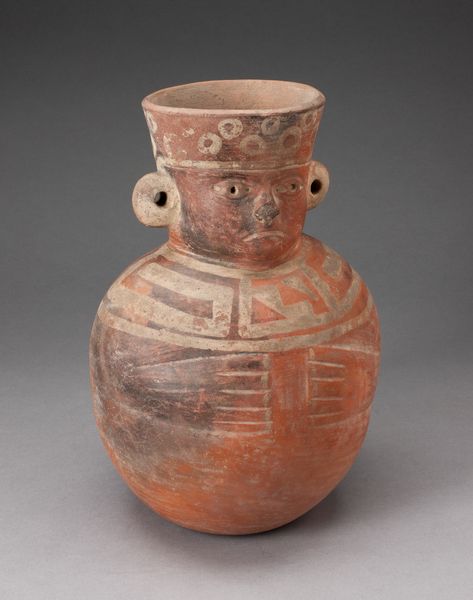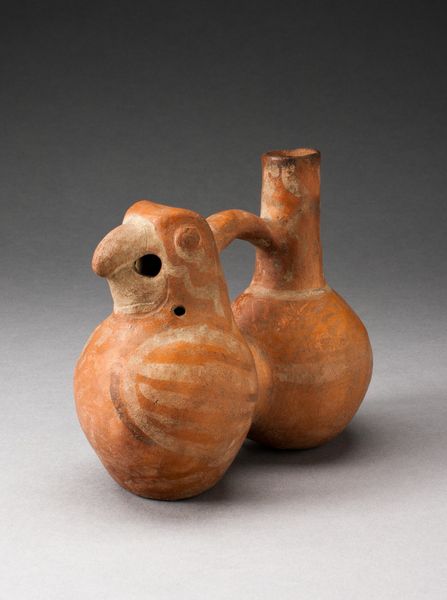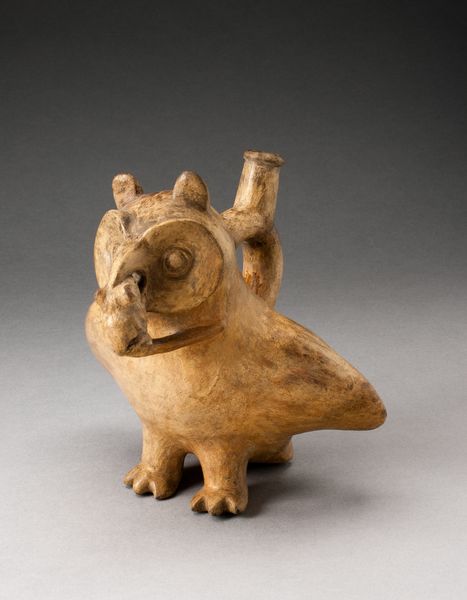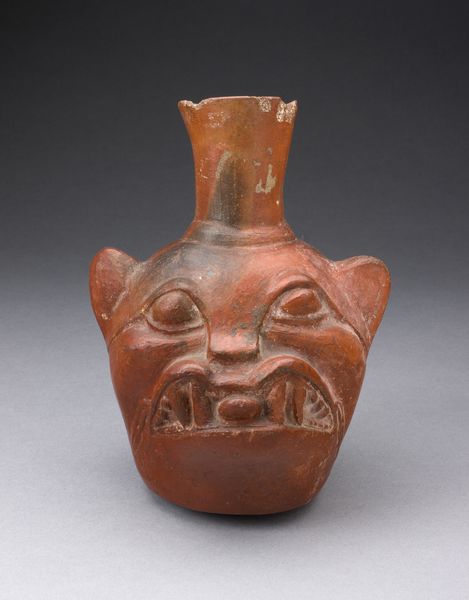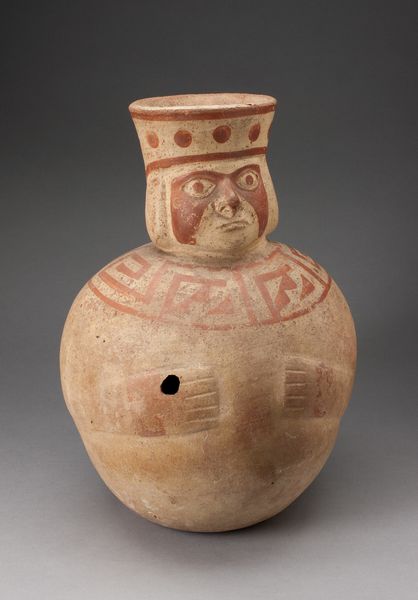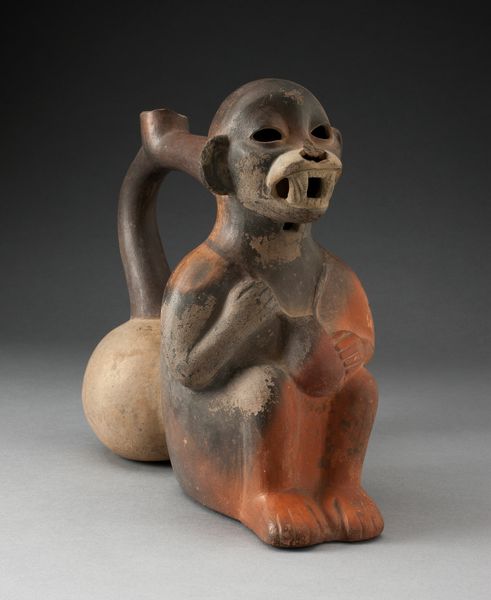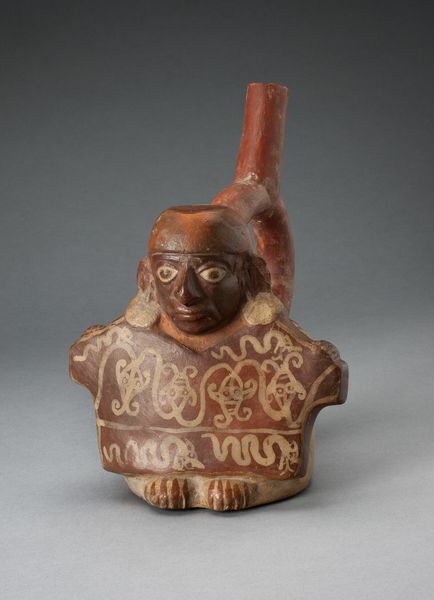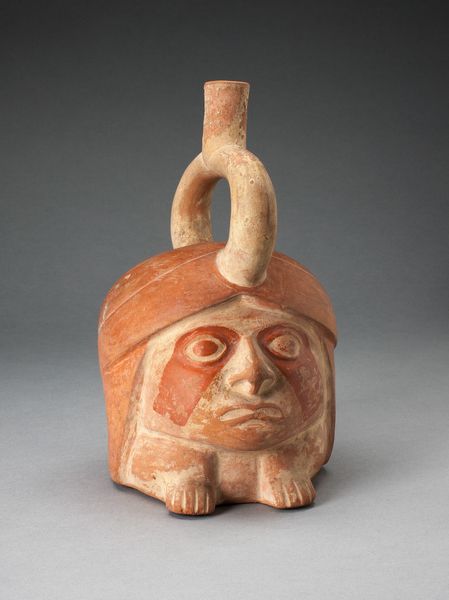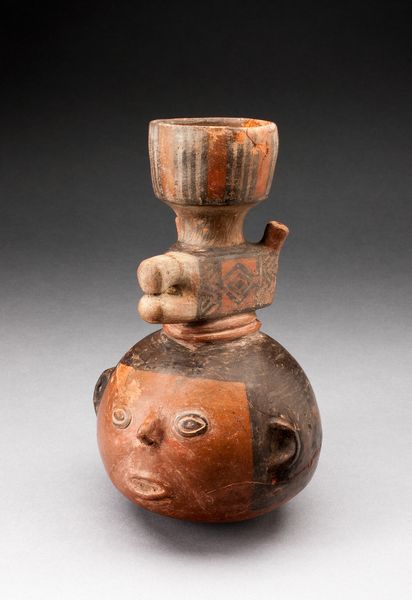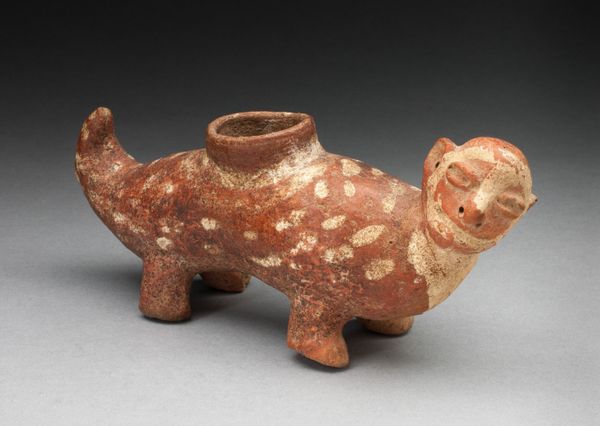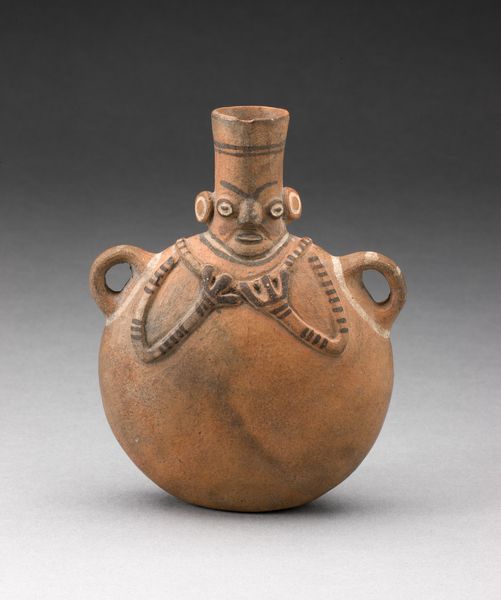
Double Chambered Vessel in the Form of Seated Figure, Possibly Deceased c. 100 - 500
0:00
0:00
ceramic, sculpture, terracotta
#
portrait
#
ceramic
#
figuration
#
form
#
sculpture
#
terracotta
#
indigenous-americas
Dimensions: 17.2 × 21.3 cm (6 3/4 × 8 3/8 in.)
Copyright: Public Domain
Editor: Here we have a Moche ceramic piece, “Double Chambered Vessel in the Form of Seated Figure, Possibly Deceased,” dating from approximately 100 to 500 AD. The figure's open mouth gives it a sort of mournful quality. What do you see in terms of its materials and construction? Curator: The use of ceramic is central here. It speaks to the Moche's deep understanding of their environment and the transformation of readily available materials into functional and symbolic objects. Consider the labor involved – from digging the clay to firing the vessel. It's a complex process, embedding cultural and social significance in the finished form. What purpose might these vessels serve, do you think, given their elaborate production? Editor: I guess they could have served multiple functions—utilitarian and ritualistic, perhaps. The seated figure makes it feel less like just a container and more like an object with symbolic importance. Curator: Exactly. The form challenges the Western division between 'high art' and 'craft.' This isn't just a pretty object; it embodies labor, ritual, and the Moche worldview. The figuration gives insights into Moche social structures, their understanding of mortality and status. Editor: It's fascinating to think about the level of skill and time dedicated to creating this, especially compared to our modern methods of mass production. Curator: Indeed. This ceramic work, seemingly simple at first glance, unravels the story of Moche ingenuity, their command of materials, and their complex social fabric. What might this object say about our relationship with materiality today? Editor: It definitely puts a spotlight on how disconnected we are from the creation processes behind everyday objects. It really shows how embedded craft can be within culture and belief systems. Curator: Precisely. By analyzing its material presence, we uncover rich insights into a society's values, technology, and interaction with its environment.
Comments
No comments
Be the first to comment and join the conversation on the ultimate creative platform.
